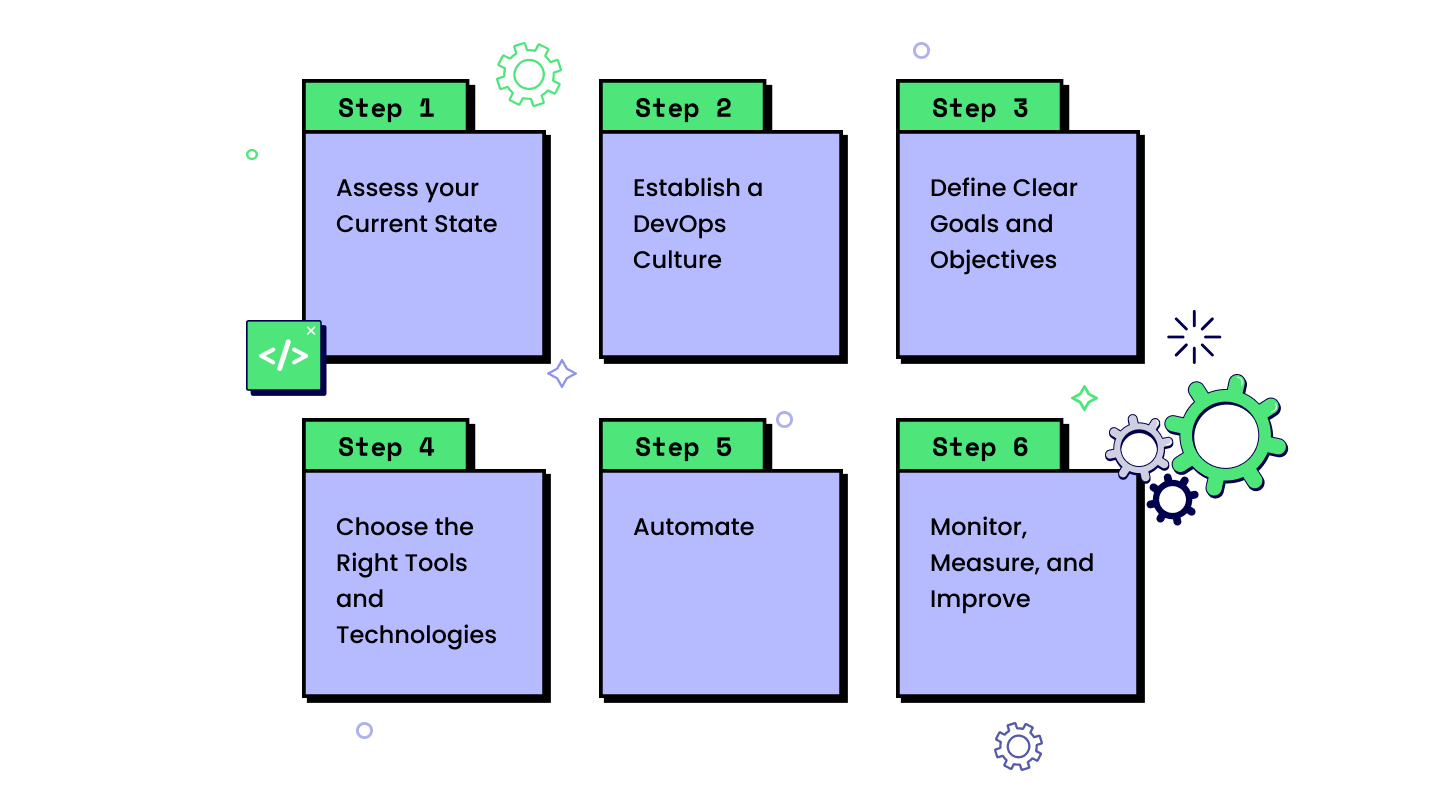In today’s rapidly evolving software landscape, DevOps has emerged as a game-changer. By bridging the gap between development and operations teams, DevOps fosters collaboration, enhances agility, and delivers high-quality software at a rapid pace. In this blog, we will dive deep into a comprehensive 6-step plan and strategy for implementing DevOps from scratch. Whether you are a startup or an established enterprise, this guide will equip you with the knowledge and insights to embark on your DevOps journey and drive digital transformation.
A Comprehensive Guide to Implementing DevOps from Scratch
It requires meticulous planning to successfully implement a DevOps from scratch, here are few crucial steps:

Step 1: Assess your Current State
To lay a strong foundation for DevOps, it is crucial to assess your current software development practices and identify areas that need improvement. Evaluate your development methodologies, tools, and team structure to understand the existing bottlenecks and challenges.
Step 2: Establish a DevOps Culture
DevOps is not just about adopting new tools; it’s a cultural shift that requires collaboration, communication, and shared responsibility. Encourage a culture of trust, openness, and continuous learning among teams. Promote cross-functional collaboration and break down silos to create a unified DevOps mindset.
Step 3: Define Clear Goals and Objectives
Before diving into implementation, clearly define your DevOps goals and objectives. Identify key performance indicators (KPIs) that align with your organizational objectives. Whether it’s improving deployment frequency, reducing lead time, or enhancing customer satisfaction, setting specific and measurable goals will guide your DevOps journey.
Step 4: Choose the Right Tools and Technologies
DevOps relies on a wide range of tools and technologies to automate processes, facilitate collaboration, and streamline workflows. Selecting the right tools that align with your organization’s requirements is crucial. From version control systems and continuous integration tools to containerization platforms and monitoring solutions, make informed decisions to empower your DevOps initiatives.
Step 5: Automate
Automation lies at the heart of DevOps. Automate repetitive tasks, such as code builds, testing, and deployments, to increase efficiency, reduce errors, and accelerate software delivery. Embrace configuration management tools, infrastructure-as-code practices, and continuous integration/continuous deployment (CI/CD) pipelines to achieve seamless automation throughout the development lifecycle.
Step 6: Monitor, Measure, and Improve
Continuous improvement is a fundamental principle of DevOps. Implement robust monitoring and logging systems to gain visibility into your applications and infrastructure. Collect and analyze metrics to measure performance, identify bottlenecks, and optimize processes. Embrace feedback loops and embrace a culture of continuous learning and improvement.
In conclusion, implementing DevOps from scratch can be a transformative journey for any organization. By following this comprehensive 6-step plan and strategy, you can lay a solid foundation for DevOps adoption, drive collaboration, and achieve faster, more reliable software delivery. Remember, DevOps is not just a process or a set of tools—it’s a mindset that fosters a culture of collaboration, innovation, and continuous improvement. Embrace DevOps, unlock its potential, and propel your organization to new heights of success.



